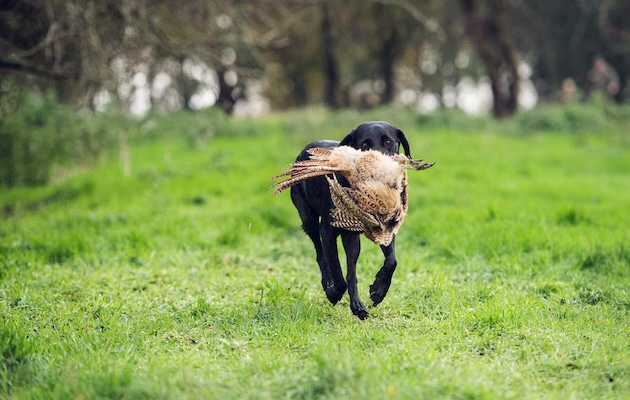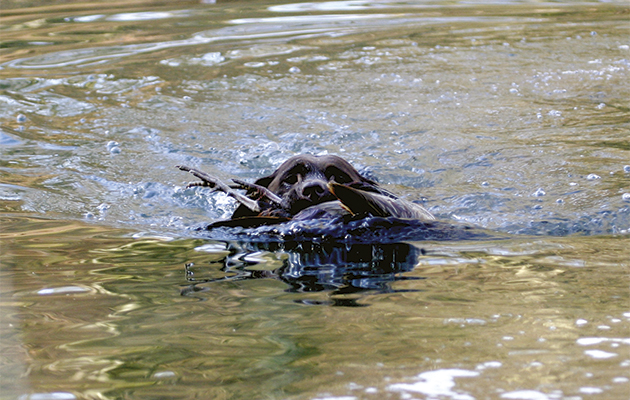Invaluable tips from Janet Menzies on what you and your dog should be looking for
Retrieving should be easy for a gundog, so why then the missed birds and general confusion? Here are some tips for gundog retrieving to help things along.
For most of us retrieving is the bottom line of gundog work. Some of us shoot only driven birds, so don’t need a dog that can hunt and flush game. Even if we do a lot of rough-shooting, we can usually forgive a dog that doesn’t hunt a perfect pattern or takes a step on a flush. Some shoots tolerate a stampede of running-in as part of the cabaret. But failed retrieves equal misery all round. A spectacular retrieve makes you and your dog heroes of the day. A mess-up is embarrassing and unfair on the birds.
Tips for gundog retrieving
Birds not being there is the basic cause of many failed retrieves. One of the main reasons that the dead bird and dog end up in different places is poor marking by the human element of the equation. Guns, especially those who don’t have dogs, are notoriously over-enthusiastic and random in their marking. Usually a picker-up can safely assume that the bird a gun tells her is lying dead over here has, in fact, long since got up and run to over there. In fairness to guns, they are often moving and turning on a bird far more than they realise. Also, birds that really do look dead on falling early in the drive have a tendency to rise with all the vigour of Lazarus and by the end of a long drive will have legged it to the nearest piece of cover. (More on picking-up.)
If you are picking-up, take human and animal nature into consideration. As Army officers are taught, time spent on reconnaissance is rarely wasted. A little map to self of where birds have fallen will help. And make a mental note of ditches, drains and deep cover into which wounded birds may run.
Practice your marking
Don’t keep sending your dog repeatedly into a particular area just on someone else’s say so. Instead, let the dog hunt widely. Watch closely for any signs that he may have found the fall or a line – anything to give you a clue of where the bird may really be. Perfect your marking techniques. This will improve your retrieving as much as any amount of training.
Use not one but two stationary landmarks to triangulate the fallen bird. For example 10yd in front of the stump, on a line with the gate at the side of the field. Then, if you move while looking for the bird, you will still have a good mark. Choose sensible landmarks. An experienced field trialler once confessed to me that he’d marked a bird as being beside a sheep – this in a field of perhaps 200 sheep! Practise your marking while you are out strolling with the dog. Hide a tennis ball at the beginning of the walk, mark it carefully and continue with your ramble. On your way back, see whether you can put the dog exactly on to the ball.

Be slow and calm in your commands
Handling the dog
Whenever you have to handle a dog out to a particular area remember to be calm, slow and deliberate in your commands and signals. Never give a dog a signal unless you have first got it sitting up. And looking at you, because a dog can’t follow your directions unless he can see them. It may sound obvious now. But in the heat of the moment we all have a tendency to wave and whistle frantically regardless of what the dog is actually doing.
If you are having trouble getting your dog to work a certain area, it is worth asking yourself why this might be so. It is usually a symptom of some other problem with the retrieve. This goes back to the issue of whether the bird is there in the first place. If it isn’t, and the dog has a good idea of where it is, naturally that is where the dog will go regardless of all your whistling. Watch your dog carefully and get an understanding of his behaviour and body language. It is usually pretty obvious when a dog finds a fall or comes across a line. Trust him and let him work out that bit of scent before you handle him somewhere else.
Why can’t your dog find the bird?
Ask yourself these questions
Can the dog see it?
Often a bird that is in plain view to a human can be hidden from the dog by a fold in the ground or similar obstacle as our eye-line is at least a metre higher than a dog’s. Get down on your hands and knees and check whether you can still see the bird.
Can the dog smell it?
A dog trusts its nose over its eyes, so if a bird has fallen in a scent-foiled spot (in water, among sheep, and so on) an apparently simple retrieve may require handling.
Was it really dead?
Even birds that were hit hard can get up and run. A bird you marked dead at the start of the drive might be in a ditch 100yd from the fall by the time the whistle blows. High birds die on impact with the ground, and a head shot is always a killing shot, but be suspicious of every other fallen bird. (More on high birds here.)
Was it marked correctly?
Mark accurately with something that will remain the same wherever you are standing. Use two static, permanent landmarks to triangulate the position of the bird. This way it doesn’t matter if your sight lines change when you are moving about looking for it.
Have you found the fall?
If your dog starts signalling that he is about to retrieve but doesn’t pick anything, assume that he has found the fall but that the bird has run on. Don’t keep sending him back; instead, let him hunt out from there.
Is there a line?
If your dog zooms off in a straight line with nose down, he is following the line of a runner. Unless you know different, trust him.
This article was originally published in 2008 and has been updated.






